Geometry HN - Unit 2: Logic and Reasoning
1/57
There's no tags or description
Looks like no tags are added yet.
Name | Mastery | Learn | Test | Matching | Spaced |
|---|
No study sessions yet.
58 Terms
Counter example
An example that shows your conjecture is false
Inductive
Drawing a conclusion based on observations or patterns
Conjecture
A conclusion drawn using inductive reasoning
Negation
A negation of a statement has the opposite truth value
Compound statements
Statements joined by “and” or “or”
/\
and
\/
or
T/\T
True
T/\F
False
F/\F
False
T\/T
True
T\/F
True
F\/F
False
Conditional statement
Written in if-then form. The hypothesis is before if and conclusion is after then.
Inverse
Formed by negating the hypothesis and conclusion (~p→~q)
Converse
Formed by switching the hypothesis and conclusion (q→p)
Contrapositive
Formed by negating and switching the hypothesis and conclusion (~q→~p)
Logically equivalent
Two statements are logically equivalent they have the same true value (converse and inverse, conditional and contrapositive)

Bi-conditional statements
Conditional & converse joined by a conjuncition
Valid argument
When the conclusion necessarily follows from the given set of premises.
Invalid agrument
When the conclusion does not necessarily follows from the given set of premises
Fallacy
An invalid argument
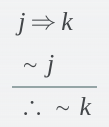
What standard form of argument is this?
Fallacy of the Inverse (invalid)
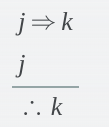
What standard form of argument is this?
Fallacy of the Detachment (valid)
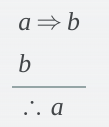
What standard form of argument is this?
Fallacy of the Converse (invalid)
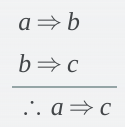
What standard form of argument is this?
Law of Syllogism (valid)

What standard form of argument is this?
Law of Contrapositive (valid)
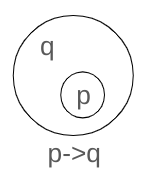
All, Always, Every

Some, Sometimes
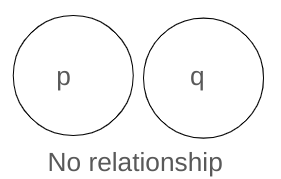
Never, No, None
If a=b, then a+c=b+c.
Addition Property of Equality (APE)
If a=b, then a-c=b-c.
Subtraction Property of Equality (SPE)
If a=b, then a⋅c=b⋅c.
Multiplication Property of Equality (MPE)
If a=b, then a/c=b/c. (c≠0)
Division Property of Equality (PPE)
a(b+c)=ab+ac
Distributive Property
If a=b then a may be replaced by b in any expression or equation.
Substitution Property
For any real number, a, a=a. (A value will always equal itself)
Reflexive Property
If a=b, then b=a.
Symmetric Property
If a=b and b=c, then a=c.
Transitive Property
Applied to statements with congruence symbols. (≅)
Properties of Congruence
For any segment AB, AB≅AB.
Reflexive Property of Congruence (RPC)
If AB≅CD, then CD≅AB.
Symmetric Property of Congruence (SPC)
If AB≅CD and CD≅EF, then AB≅EF.
Transitive Property of Congruence (TPC)
Segments are congruent if and only if they have the same measure.
If AB≅CD, then AB=CD.
If AB=CD, then AB≅CD.
Definition of Congruence
If M is the midpoint of AB, then AM=BM.
Definition of Midpoint
If A, B, and C are collinear points and B is between A and C then: AB+BC=AC.
Segment Addition Postulate. (SAP)
m∠A=m∠B🡘∠A≅∠B.
Definition of Congruence.
An angle bisector divides an angle into two equal parts.
Definition of Angle Bisector
Complementary 🡘 sum is 90°.
Definition of Complementary Angles
Supplementary 🡘 sum is 180°.
Definition of Supplementary Angles
Perpendicular lines form right angles.
Definition of Perpendicular.
A right angle=90°.
Definition of Right Angle
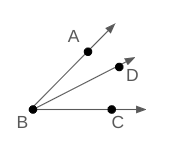
m∠ABD+m∠DBC=m∠ABC
Angle Addition Postulate (AAP)
If two angles are vertical, then they are congruent.
Vertical Angle Theorem
If two angles form a right angle, then they are complementary.
Complement Theorem
If two angles form a linear pair, then they are supplementary.
Supplement Theorem (Linear Pair Postulate)
If ∠A is complementary to ∠B and ∠C is complementary to ∠B, then ∠A≅∠C.
Congruent Complements Theorem
If ∠A is supplementary to ∠B and ∠C is supplementary to ∠B, then ∠A≅∠C.
Congruent Supplements Theorem